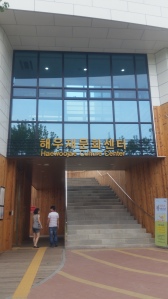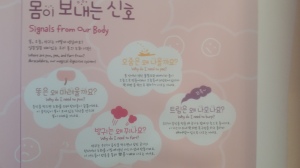I’m back in Ireland and with the nation turning more green and a range of alternative living options available, I decided to visit Cloughjordan Ecovillage to see sustainable living in action.

How do you get there?
By Car;
Moneygall is in North Tipperary and approximately from Moneygall. From the motorway, take exit 23 to Moneygall and then follow the signs to Cloughjordan.
When you arrive in Cloughjordan, the Ecovillage is approximately half way down the Main Street. It is at a small 4 way intersection, opposite a church.
By Train;
Cloughjordan has a train station that services routes from Dublin, Heuston and Limerick via Nenagh. For timetables, please go to irishrail.ie
Do you have to take a tour?
While you are free to drive into the village and look around, you must remember that there are people living here and to respect their privacy and security, it is recommended that you take a tour. You also won’t get the full benefit of knowledge if you just ramble around alone.
There are free tours every Saturday and Sunday at 3pm. I met the guide at the Main Street entrance or you can meet at Sheelagh na Tigh which is a little cafe on the Main Street.
If you have a group or you wish to participate in a workshop or so on, you can email edvisits@thevillage.ie They have these kind of visits all the time and are very accommodating to groups.
What is an Ecovillage?
From their website, http://www.thevillage.ie;
Ecovillages are urban or rural communities of people who strive to integrate a supportive social environment with a low impact way of life. To achieve this, they integrate various aspects of ecological design, permaculture, ecological building, green production, alternative energy, community building practices, and much more.
The Ecovillage in Cloughjordan is the first of its kind in Ireland and leads the way for the future of sustainable living in Ireland. It is located on 67 acres and has a community farm, woodland, allotments, houses, hostel and Enterprise centre.
The best way to understand is to take a tour and learn from the guide and that’s what I did earlier today.
My Tour.
The tour starts with a little introduction of everyone in the group. My group had 2 foreigners and 2 Irish so a nice mix of people. Looking at the map, it was pointed out that the village is divided into thirds. One third to houses and apartments, one third to the farm and allotments and one third to woodland.

Immediately upon walking down the little hill, it is explained that the height of the buildings keeps with the height of buildings in Cloughjordan itself. I was most surprised to find an Ecohostel called Django’s on the left just past the entrance. This unique hostel is open to the public, year round and you can find out more on their websitehttp://www.djangoshostel.com
Djangos Hostel seen on the left.

We continued walking and saw examples of the various types of houses built in the village. Among others there are Cob, Timber Frame, Hemp crete and all cedar houses. All houses are low energy and share hi spec broadband as well as a community heating system. The village has a 2gha rating which I believe is the lowest in Ireland and they are working on lowering that number.
The community heating system is very interesting . Two 500 Kilo watt wood fired burners supply every home with heat. The cost is divided among the residents.

Energy is also provided by solar panels which can be seen on the tour.
We continued on to the allotments. It is here that you can see research in action. One resident has his own allotment where he is researching growing techniques and so on.

On the apple walk, you’ll find every type of apple you can imagine. Luckily, we were allowed to eat some of the ripe ones and they were juicy and delicious. There’s something to be said about eating fruit straight off the tree. Our guide even brough along a spreadsheet with all the information on all the apples.


When we managed to pull ourselves away from eating the apples, we started into the yellow raspberries.

Eventually, we continued on our way and off to the farm. This is a community farm where members can collect their vegetables every week. Anyone can become a member so check out their website if you are interested.
We finished our tour by sampling some more delicious fruit that we found on the way.
A few things struck me about the village. The people seem extremely innovative, motivated and dedicated. Along the way, we were introduced to projects and plans that were either ongoing or in the process of approval.
The aim of the village is learning. Everyone is open to learning about sustainable living or teaching it to people like me on tours. For example, the drainage system is quite unique. In several areas, depressions can be seen. These are called Swales. When severe rain comes, the water is collected in these swales and they fill like lakes. Then, the water can slowly permeate through the ground. This prevents flooding to the village.
This is the way of the future and the possibilities are endless. I was so inspired to hear of the work already done in the village but can’t help but think of the possibilities for the future. With new methods coming on board all the time, this village is only just growing.
Worth a visit?
Absolutely. I learned so much from my visit and found it quite innovative. It would be a great visit for families also. You can find out more details on their website http://www.thevillage.com, on Facebook or on Twitter.

































